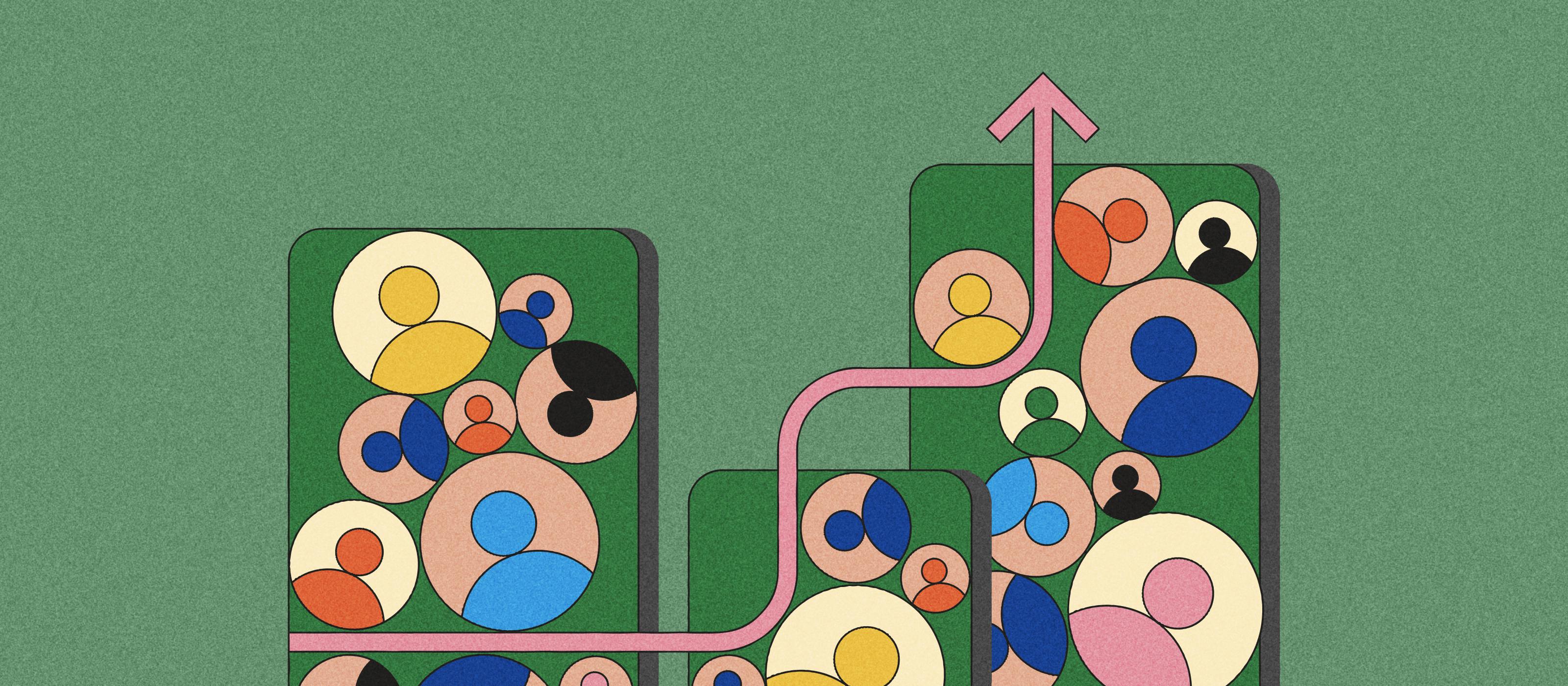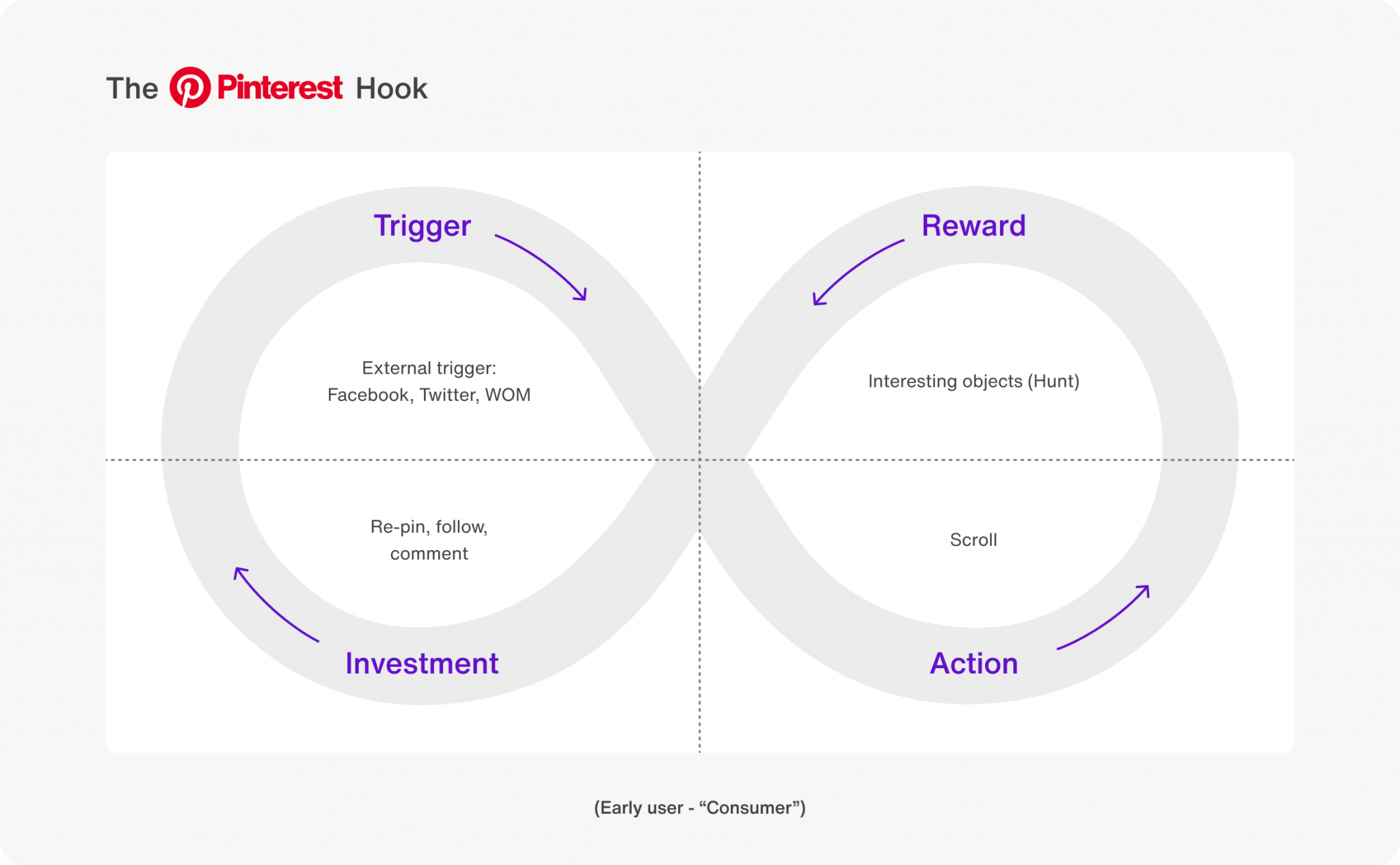5 best practices to increase your app retention rate

Finding new customers will always be what grows your user base, but the ability to retain customers is what grows your revenue.
Loyal customers who return to your product repeatedly are likely to spend 31% more, and an existing customer is also 50% more likely to try new products, and costs less to nurture to purchase.
Many companies are laser-focused on customer acquisition, but using your mobile app retention metrics to create customer loyalty strategies can provide more lifetime value for both the business and its customers. This is why app retention metrics are so important; losing your customer at any part of the buyer’s journey—especially post-purchase—is bad for business.
Returning users have higher customer lifetime value (LTV), which translates into higher profitability. When looking at your app retention rate, focus on user engagement metrics like daily active users (DAU), weekly active users (WAU), and monthly active users (MAU). But it would be impossible to tell the full story on those details alone.
Ultimately, app retention is about driving consistent usage through value. But how do you get users to develop the habit of returning to your app?
In this post we’ll examine the role of psychology in retention, break down the basics of mobile app retention metrics, provide statistics and benchmarking data, and compare the differences between acquisition and retention.
Let’s get started!
What is mobile app retention?
Mobile app retention is a calculation of users who continue using an app over a period of time. Often we see mobile app retention metrics expressed in intervals of 30 days, 7 days, and 1 day after a user first downloads the app. To find the rate, simply divide your total monthly active users by the number of monthly app installs.
The science behind app retention
Marketing strategies and technologies change, but human psychology doesn’t. Before delving into the nuts and bolts of app retention metrics and best practices, we must understand the science behind forming habits—and getting users to return to your app.
Nir Eyal, the author of Hooked: How to Build Habit-Forming Products, used the Hooked model to explain how people develop a habit of using a product.
Two factors drive habit-building: Frequency and attitude change. First, you need to get a user to perform an action frequently (i.e., opening your app). Along the way, you must also create a positive experience (e.g., meaningful interactions).
The psychological cycle of building habits has four components:
The trigger can be internal (like emotions or memory) or external (a social media post or a notification). For example, people tend to check email and Facebook more often when they feel lonely.
The action is the simplest thing one can do to get a reward. So what motivates us to act? According to the Fogg Behavior Model, we’re driven to seek pleasure, avoid pain, seek hope, avoid fear, seek acceptance, and avoid rejection.
- The reward soothes our cravings when we complete an action and get what we anticipated. So what do we want?
Tribe: A feeling of belonging through recognition and cooperation.
Hunt: A sense of accomplishment through obtaining resources (e.g., information).
Self: A feeling of achievement through mastery, competency, consistency, and completion.
The investment sets the stage for the next trigger by getting users to invest for future benefits. It can be social capital, time, money, effort, personal data, etc.


[FREE TOOL] How does your app's engagement score compare to industry standards?
Mobile app retention key statistics
How does your app retention rate stack up?
Here’s how to calculate app user retention rates:
Aggregate Retention Rate:
(MAU / number of Installs) x100% = Aggregate Retention Rate
Cohort Analysis:
(Number of users retained at the end of the period/number of installs at the start of the period) x100% = Retention Rate for Cohort
So what constitutes a good retention rate? Average retention rates vary significantly by industry, so an app’s retention metric is just a number until you put it in context. Here are some global benchmarks for reference via Statista.
How to increase app retention with best practices
How do you increase your app’s stickiness and create a positive impression of your brand to optimize retention rates?

Elevate in-app engagement eBook
1. Increase app retention through outstanding UX and CX
86% of consumers say they’d leave a brand after just two poor experiences, while 74% indicate they’re likely to buy based on CX alone.
Product design and user flow
People want to take the simplest action to achieve a reward. Your app’s user interface (UI) should be intuitive, and the user journey should be as frictionless as possible to shorten time to value.
Personalize the interactions
91% of consumers are more likely to buy from brands that provide personalized offers and content. Use profile, behavioral, and demographic data to inform your segmentation strategy and deliver a highly relevant experience.
You can deepen your UX through one-on-one interactions to deliver a personalized experience in real-time. In-app messaging and live chat is the ideal channel for answering questions, troubleshooting, and assisting users in completing transactions.
2. Increase app retention by building emotional connections
Building emotional bonds is the surefire way to tap into the psychology of habit-forming because it’s human nature to crave connections with others. Here’s how to create meaningful interactions to foster user relationships:
Build a tribe of loyal users
A sense of belonging through recognition and acceptance creates the reward that’ll entice users to return to your app. You can increase your app’s stickiness by building an in-app community where users can connect with each other for a rewarding experience.
Your community should add value to the CX while enabling you to leverage user-generated content (UGC) to enrich your brand image. Implement content moderation capabilities in your in-app chat to create a safe environment for on-brand interactions.
Customer service
Customer interactions via your app should be on-brand and focus on helping customers achieve a rewarding experience. They should be part of an omnichannel customer experience that will encourage users to develop a positive impression of your brand.
3. Keep people around by providing value at every step
Providing value is more than just delivering on what your app promises. Yes, your app store listing and marketing content should accurately describe who you are and what you do. But providing real value takes much, much more. If you fail to deliver on your promise, app users will likely leave your app and never return. Plus, you’d be spending your app marketing budget on attracting the wrong audience.
4. Meticulously track your data — and act on it
Data-informed decisions are the key to growth once you’ve achieved some traction, but to do that you’ll need to measure the right KPIs. Beyond the obvious stats like LTV, ARPU, retention rate, churn, and CPA, there are several key app metrics specific to retention that you’ll want to set up tracking for.
Here are a few examples:
Time per session
Time spent per session over time
Average number of sessions per user in a predetermined time period
Session interval
Once you’re able to understand the app experience with this type of session data, you’ll be able to better predict uninstalls and plan proactively to prevent them.
5. Use in-app messaging to provide context and immediacy
No matter how intuitive your app may be, users will always need some education in order to get the most value out of it. You can put together an extensive library of resources on your website and develop amazing onboarding sequences via email, but nothing beats in-app messaging. This is because in-app messaging allows you to enhance the user experience during the actual session in the app; right when the user has all the functionality at their fingertips.
And the proof is in the numbers: In app messages drive 3.5X higher user retention, according to Localytics. Read more about the benefits of in-app messaging vs other channels on the Sendbird blog.
Now that we’ve covered some retention best practices, let’s take a look at how to differentiate your efforts between retention and acquisition.
Retention vs acquisition
We mentioned the dichotomy of user retention vs acquisition earlier, but it’s worth unpacking a bit more as you build out your app retention strategy.
Ideally, your business would have a flood of new users organically installing your app every day and you could spend 100% of your time, energy, and resources on working to retain them. But we know that the real world is far from ideal and the reality is you’re going to need to balance your work in retaining users with finding ways to attract new ones.
The key word here is balance; how can you achieve the proper balance between retention and acquisition?
The answer to this, from an operational standpoint, is extremely simple:
Look at what your company does before the app install vs what it does after the install.
Pre-install activity
Everything that convinces somebody to download your app actually happens off the platform—your website, social media channels, ads, and perhaps even your email campaigns. Mobile marketing teams obsess over optimizing these channels to find the most efficient cost-per-acquisition; as they should.
Take a look at the resources you’re allocating to user acquisition—your costs, your man hours, the external agencies you use, etc., and compare to the resources you’re using post-install. It’s not a perfect calculation, of course, but when you compare that activity with the retention metrics we discussed earlier, it should start to paint a picture of your balance of acquisition vs retention.
Post-install activity
Once a user installs your app, all the work your team did pre-install doesn’t really matter anymore—the work is now all about paying off the promises your marketing team made with the ad and email campaigns. Again, in an ideal world, your app’s functionality would do this all on its own, but if you’re ever watched heat-mapped user journeys of people clicking back and forth, you know that it’s not always the case…
Users must be actively encouraged to continue exploring the app. Now you could do this via email or SMS, but we know there’s no better place to teach somebody how to get the most value out of your app than messaging in the app itself.
When looking at pre vs post install data and activity, there are two actionable opportunities you can take:
1. Connect acquisition stats to retention metrics
If Facebook ads have the lowest CPA but the highest user churn rate, is that really more cost effective than Google ads that have a higher CPA but a better retention rate? Crunch the numbers and make sure.
2. Connect acquisition messaging to retention messaging
Marketers are constantly testing which messaging themes convert best in their acquisition efforts, and this is an incredibly powerful insight (think pricing vs features, for example). If there is a clear winner in the messaging regarding your acquisition efforts, use that same theme in your mobile app retention strategies. This way, the user is reminded that they’re receiving the value they were promised in the ad, even if you have to spell it out for them! Make sure your app developers are collaborating with your marketing team on this messaging.

Your app is where users connect.
Sendbird connects you to your customer at every step
Sendbird allows you to unify fragmented conversations and experiences into one consistent, branded experience. We integrate into your existing software and act as an extension of your development team, so that your customer is still getting to know your brand.
From DMs to sales, operations, and support–you can build conversations to streamline a host of use cases that will help you improve the customer experience and see real ROI.
Use push notifications
Push notifications can deliver the correct information at the right time—the trigger you need to get users to open your app more frequently. Personalize these notifications and experiment with the timing to stay top of mind without being a nuisance.
Sendbird helps the fastest-growing rideshare and delivery companies connect drivers, consumers, and support agents within the mobile app to ensure order completion.
Ask for feedback
Any relationship is a two-way street, and so is the one with your users. Seek opportunities for two-way interactions, such as gathering feedback and acting on them. Acknowledge users’ contributions (e.g., a gift card or social media shoutout) and share how you incorporate the input.
In-app messaging checks the boxes
In-app messaging helps you actively engage users and deliver a seamless customer lifecycle. You can help them build proficiency, achieve their rewards, and build the habit of using your app faster. Meanwhile, the one-on-one interactions deliver a relevant, personalized experience that enables mobile app users to access the resources they need to accomplish their goals.
A Comscore research found that in-app messages are eight times more effective in engaging users than push notifications. Brands that use in-app messaging are 3.5 times more effective in increasing app user retention than those that don’t.
These types of in-app messages can help improve customer retention:
Tips to achieve tasks with the app, which you can show in context based on user behaviors and interactions with specific screens.
Task lists to take users through a specific workflow to streamline the onboarding experience and shorten the time to value.
Customer support via live chat to provide real-time assistance so users can accomplish a task or get the information they need when they need it.
In-app messaging and in-app communities enable you to tap into the need for achievement, belonging, recognition, and social interactions to keep users coming back without fad tactics or “tricks and hacks.”
Sendbird’s in-app solutions can help you increase mobile app engagement and retention by building a socially engaged community with robust chat, voice, and video call functionalities.
Learn more about our social and community solution and see how you can implement an in-app community with robust group messaging capabilities to check all the boxes without reinventing the wheel.










